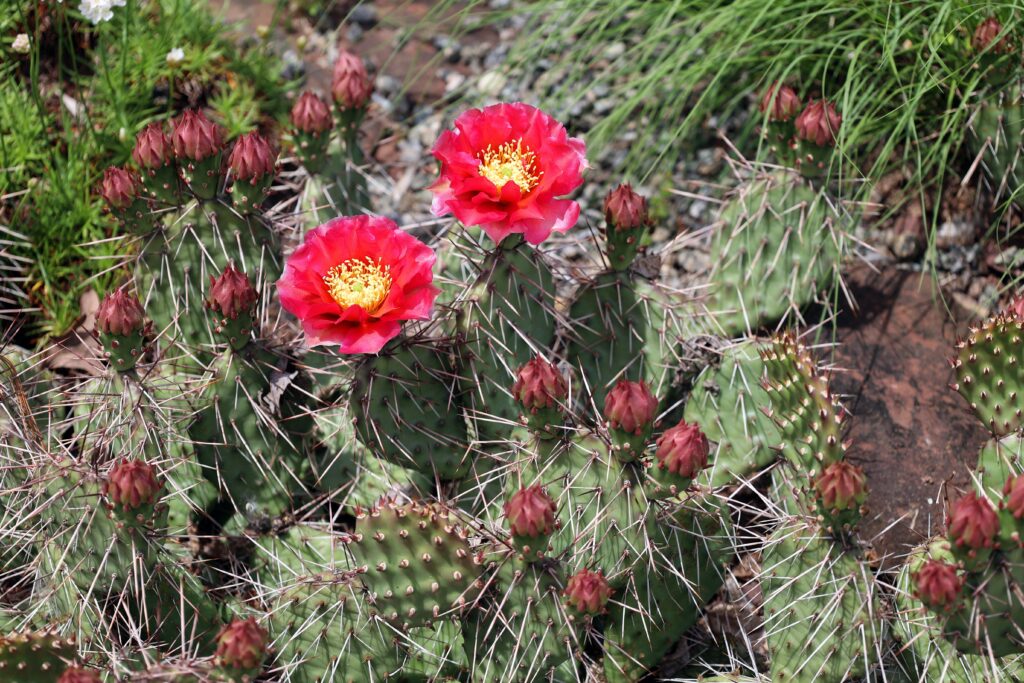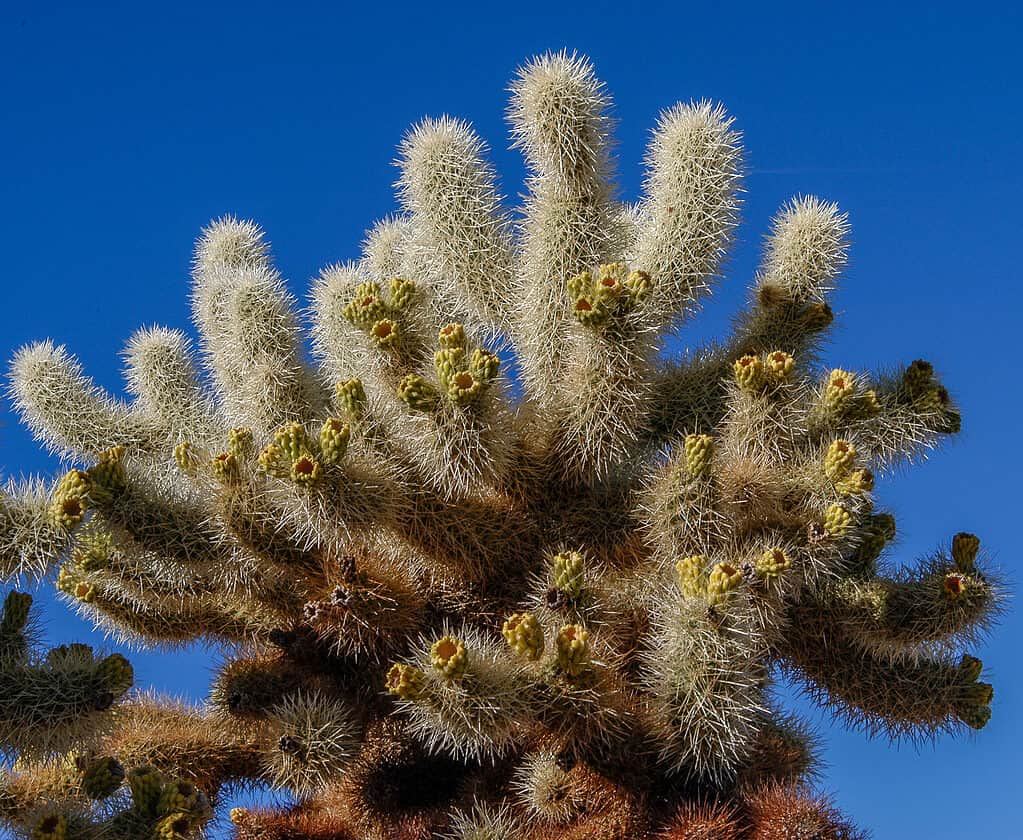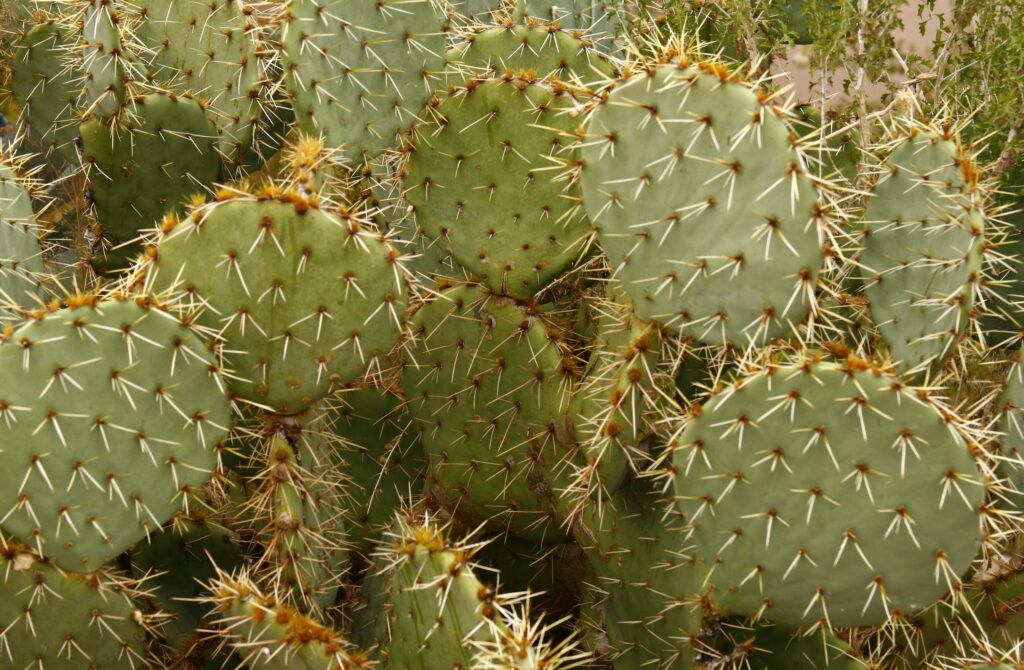A cactus is a member of the succulent family, characterized by its thickened stems and leaves. They have adapted to survive in extremely dry conditions and are native to many parts of the world, including Nevada. These plants come in many shapes and sizes, from small round globes to large columns that can reach up to 25 feet tall! People love planting cacti as outdoor landscaping ornamentals because they require minimal care and maintenance. Their drought-resistant nature makes them ideal for hot climates like Nevada’s. With proper watering techniques, these desert plants can thrive year-round with little effort on your part. Cactus plants boast unique features such as colorful blooms, spines, or thorns for protection against predators and an impressive ability to store water during long dry periods, making them a great addition to any garden!
Can You Grow Cacti in Nevada?
Nevada has a variety of climates depending on the region. In general, most of Nevada is designated as USDA Hardiness zone 4a or 10a, with some mountainous areas falling down to-30°F in the winter. Overall the southern parts of Nevada have mild winters and stay above-freezing temperatures.
The gardening climate in Nevada is generally dry due to its semi-arid climate, so cacti are well suited for this environment. It’s important to ensure that your cactus has good drainage and access to plenty of sunlight since they thrive off direct light exposure. During the summer months, temperatures can get quite hot, but during winter nights, temperatures cool significantly, so proper protection should be taken when planting cacti outdoors.
6 Types of Cacti
Since the gardening climate swings from one extreme to another in Nevada, choosing the correct type of cactus is crucial. We will go over some of our favorite varieties below.
1. Pincushion Cactus
Pincushion Cactus (Escobaria vivipara) is a plant that can be found grown in Nevada and many other areas of the southwestern United States. This type of cactus is typically low-growing, with its stems forming small mounds that are less than 6 inches tall. It has light green spines that become darker as they mature, and these can be very sharp. The flowers on this type of cactus range from white to pinkish-purple in color and bloom between April and June. The fruits are edible when fully ripe and taste sweet, like a fig or date. This species needs well-drained soils with little to no water during the winter months but enjoys plenty of sunshine all year round. With proper care, Pincushion Cactus will thrive in your garden for many years! This cactus plant is hardy from USDA Zones four through nine.

Pincushion Cactus (
Escobaria vivipara).
©BT Images/Shutterstock.com
2. Plains Prickly Pear Cactus
The Plains Prickly Pear Cactus (Opuntia polyacantha) is a species of cacti native to the Great Plains region of North America. It grows in a wide range of habitats, from dry grasslands and open woodlands to rocky hillsides and desert scrubland. Its stem segments are characterized by their flat, paddle-shaped pads covered with clusters of yellow spines or glochids. The flowers have bright yellow petals, which eventually give rise to large edible fruits that can be eaten raw or cooked. This species is also important for its role in providing food and shelter for wildlife such as birds and small mammals. Despite its widespread distribution, it has been adversely affected by habitat destruction due to agricultural expansion and land development projects. Conservation measures are therefore necessary in order to ensure its continued survival within the state’s ecosystems. This cactus is hardy from USDA Zones 3b to 9b.

Plains Prickly Pear Cactus (
Opuntia polyacantha).
©meunierd/Shutterstock.com
3. Mountain Ball Cactus
The Hedgehog Cactus or Mountain Ball Cactus (Pediocactus simpsonii) is a fairly common type of cacti that can be found in the desert regions of Nevada. This solitary plant typically grows four to eight inches tall and has distinctive white spines that give it its name. The flowers are usually pink or yellow in color, although they may also vary depending on the variety.
These plants prefer dry and warm conditions with plenty of sun exposure, making them well-suited to many parts of Nevada’s desert climate. They are relatively hardy plants but should still be given adequate drainage and spacing when planted out in order to ensure healthy growth. Regular watering during the summer months is recommended for optimal health, as well as protection from extreme temperatures and direct sunlight during the hottest part of the day. With proper care and attention, these cacti can provide an interesting addition to any garden! This cactus is hardy to USDA Zones 3 to 8b.

Hedgehog Cactus or Mountain Ball Cactus (
Pediocactus simpsonii).
©Danita Delimont/Shutterstock.com
4. Kingcup Cactus
Kingcup Cactus (Echinocereus triglochidiatus), also known as the Claret-Cup cactus, is a small, columnar cactus native to the American Southwest. It typically grows in arid regions of Nevada, Arizona, and California and can reach up to two feet tall. Its stem is usually greenish-brown or purple, and it has several ribs with three central spines that give it its name: triglochidiatus means “three-spined” in Greek. The flowers are bright reddish-pink or white cup-shaped blooms that open during the day and close at night. They attract hummingbirds who feed on their nectar throughout the spring and summer months. Kingcup Cacti will survive harsh desert climates with little water but do best when watered lightly every few weeks during periods of growth and dormancy. This cactus is hardy in USDA Zones 5 through 9.

Kingcup Cactus (
Echinocereus triglochidiatus).
©iStock.com/Angel La Canfora
5. Teddy Bear Cholla
The Teddy Bear Cholla (Cylindropuntia bigelovii) is a species of cactus native to the Mojave and Sonoran deserts in California, Nevada, Utah, and Arizona. It grows in sandy soils and has an average height of 5 feet with a spread of 1-3 feet. The stems are made up of segments that grow together to form cylindrical spines which can reach up to 2 inches long. Its most distinguishing feature is its dense clusters of white hairs that cover each stem segment giving it the look of a teddy bear’s fur — hence its common name!
The flowers range from yellowish-green to pinkish-purple in color and bloom between April & October. This species provides food for wildlife, such as birds who consume its seeds, while rabbits eat their pads. They also provide shelter for small mammals like rodents. As this plant does not require much water or fertilizer, it makes an excellent addition to xeriscape gardens, where water conservation is key! This plant is hardy to USDA Zones 8b to 10a.

Teddy Bear Cholla (
Cylindropuntia bigelovii).
©Bob Coffen/Shutterstock.com
6. Pancake Prickly Pear Cactus
The Pancake Prickly Pear Cactus (Opuntia Chlorotica) is a native species of cactus found in the deserts of Nevada. It typically grows to be around 6-8 feet tall and has wide, flat pads that give them its common name. This cactus can be identified by its bright green pads with yellow margins, as well as its long spines that vary in color from white to gray. This species blooms during the summertime and produces large yellow flowers with red centers. The fruit produced by this plant is edible and is often used to make jams or jellies or enjoyed fresh off the plant! The Pancake Prickly Pear Cactus requires very little water once established, making it an ideal choice for xeriscaping projects in Nevada’s arid climate. This variety of prickly pear is hardy in USDA Zones 9, 10, and 11.

Pancake Prickly Pear Cactus (
Opuntia Chlorotica).
©Steve Bower/Shutterstock.com
Summary of 6 Types of Cacti to Grow in Nevada
| Cactus Name | Scientific Name | Cactus Height | USDA Hardiness |
|---|---|---|---|
| Pincushion Cactus | Escobaria vivipara | 6 inches tall | Zones 4 to 9 |
| Plains Prickly Pear Cactus | Opuntia polyacantha | 12 inches tall | Zones 3b to 9b |
| Mountain Ball Cactus | Pediocactus simpsonii | 4-8 inches tall | Zoes 3 to 8b |
| Kingcup Cactus | Echinocereus triglochidiatus | 2 feet tall | Zones 5 to 9 |
| Teddy Bear Cholla | Cylindropuntia bigelovii | 5 feet tall | Zones 8b to 10a |
| Pancake Prickly Pear Cactus | Opuntia Chlorotica | 8 feet tall | Zones 9 to 11 |
The photo featured at the top of this post is © iStock.com/bpperry
Thank you for reading! Have some feedback for us? Contact the AZ Animals editorial team.






